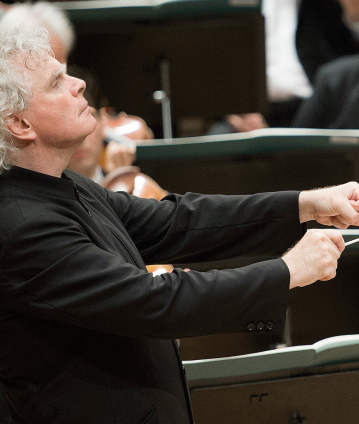Interview
Tomi Mäkelä on Carl Nielsen and Arnold Schoenberg Simon Rattle dirige Nielsen et Schönberg

La fameuse scène du meurtre sous la douche, dans Psychose d’Alfred Hitchcock, ne serait pas aussi terrifiante sans les grincements d’instruments à cordes qui l’accompagnent – la bande originale de Bernard Herrmann compte parmi les plus beaux exemples tardifs d’expressionnisme musical. Sir Simon Rattle dirige aussi deux fruits plus précoces de ce style à l’intensité bouleversante : La Main heureuse d’Arnold Schönberg et la Symphonie n° 4 de Carl Nielsen, dans laquelle le compositeur exprime son « inextinguible volonté de vivre ».
Berliner Philharmoniker
Sir Simon Rattle
Gijs Leenaars
Florian Boesch
Membres du Chœur de la Radio de Berlin
© 2015 Berlin Phil Media GmbH
Interviews liées au concert
Artistes
Nos suggestions
- Beethoven et Mozart avec Simon Rattle et Mitsuko Uchida au Festival de Pâques
- Ouverture de la saison 2017 : Simon Rattle dirige « La Création » de Haydn
- Simon Rattle dirige un concert « à la française »
- « La Damnation de Faust » avec Simon Rattle, Joyce DiDonato et Charles Castronovo
- Concert de la Saint-Sylvestre 2014 avec Simon Rattle et Menahem Pressler
- La « Passion selon saint Jean » de Bach avec Simon Rattle et Peter Sellars